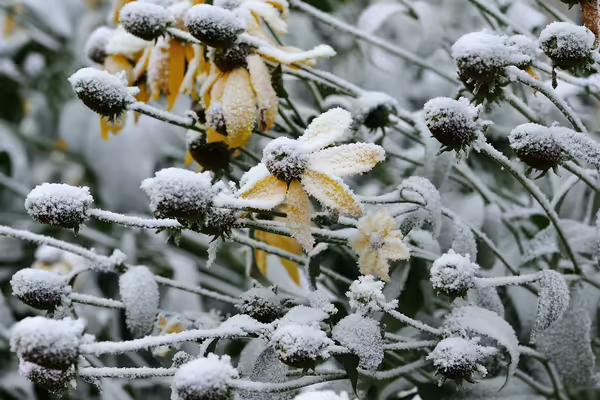
URBANA, Ill. — Sitting by the crackling fireplace, wrapped in a cozy blanket inside our homes this winter, the appreciation for the outdoors is limited to the scenes framed by a frosty windowpane. Consider incorporating some plants into the landscape that create dazzling winter interest with their textures, colors, and movement. With perfectly placed additions, the cozy view can become a winter wonderland.
Trees and Shrubs
While often appreciated for their foliage or flowers, many trees and shrubs also have interesting and distinctive bark. Exfoliating bark on a tree trunk captures attention no matter the season but stands out most dramatically in winter when the branches are bare. A hidden color in the garden is often revealed beneath the peeling and curling bark, too. Trees with exfoliating bark include river birch (Betula nigra) and paperbark maple (Acer griseum). Be patient when planting these, as it may take several years for the trees to develop their unique features.
The colorful stems and branches of deciduous shrubs are often masked by the lush green foliage throughout the growing season, but once the cold temperatures return in the fall, forcing the leaves off the branches, the stunning reds, oranges, and yellows highlight the landscape. To receive the most impact from these colorful shrubs, plant them in groupings instead of individually. Red twig dogwood and yellow twig dogwood varieties (Cornus sericea) are two favorites. To keep the stem’s vibrant colors, prune these in late winter, like February or March, to encourage new, colorful stems to regrow.
Many plants hold onto the fruits, berries, and cones through the winter if the birds don’t get to them first. Black chokeberries (Aronia melanocarpa) produce clusters of small black berries that are not favored by the birds and will persist into the winter. Brilliant red berries adorn the stems of the winterberry shrubs (Ilex verticillata). Adore them early before birds pluck the shrub bare.
The list of winter interest plants would not be complete without the inclusion of evergreen trees. While everything else in the landscape is brown, bare, and dormant, these beauties proudly showcase a spectrum of colors from dark green to blue. An evergreen’s color is only improved by seasonal snow resting on the branches, creating a perfect shelf for settling snow. Many of these species are too large for most backyards, so consider dwarf varieties available in every shape, color, form, and size.
Perennials
Perennials can also add some winter interest to the garden. Consider leaving some stems and foliage in the garden for the winter instead of cutting everything back in the fall. Plants with distinct seed heads, such as coneflowers (Echinacea) and black-eyed Susan (Rudbeckia hirta), can add a spiky texture but also can be a food source for the birds. Taller perennials with woody stems can also be kept in the landscape for height. Ornamental grasses will add texture and movement to a winter garden.
Landscapes may be lacking colorful blooms or lush green foliage this time of year, but there are still plants that can create an attractive landscape for people and wildlife to appreciate. Winter is another time for nature to shine. No matter the season, make sure a landscape never lacks that natural beauty from unique and distinct plants.
For more on plant selection and care, visit extension.illinois.edu/plants. For questions, connect with a location Extension office at go.illinois.edu/ExtensionOffice.
Brittnay Haag is an Illinois Extension horticulture educator for Livingston, McLean, and Woodford counties. Gardeners Corner is a quarterly newsletter from gardening experts around the state. Each issue highlights best practices that will make your houseplants, landscape, or garden shine in any season. Join the Gardener’s Corner email list at go.illinois.edu/GCsubscribe for direct access to timely tips.
PHOTO CAPTION: During fall clean-up, consider leaving some stems and foliage from perennials as they can add some winter interest to the garden. Photo: Adobe Stock.
University of Illinois Extension develops educational programs, extends knowledge, and builds partnerships to support people, communities, and their environments as part of the state's land-grant institution. Extension serves as the leading public outreach effort for University of Illinois Urbana-Champaign and the College of Agricultural, Consumer and Environmental Sciences in all 102 Illinois counties through a network of 27 multi-county units and over 700 staff statewide. Extension’s mission is responsive to eight strategic priorities — community, economy, environment, food and agriculture, health, partnerships, technology and discovery, and workforce excellence — that are served through six program areas — 4-H youth development, agriculture and agribusiness, community and economic development, family and consumer science, integrated health disparities, and natural resources, environment, and energy.